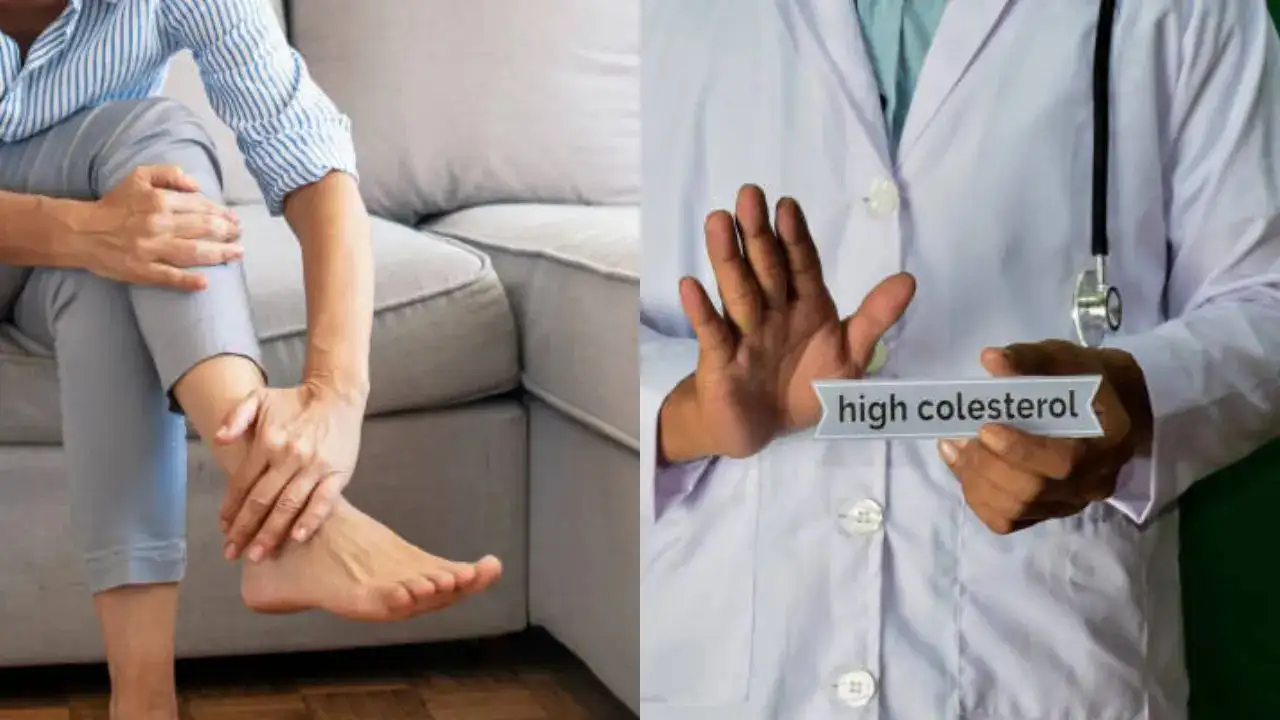Ashima Sharda Mahindra • 02 Apr 2025
Frequent Pain and Cramps in Your Legs Could be Due to High Cholesterol; Here's How to Control It

It is a common circulatory problem in which narrowed arteries reduce blood flow to your legs that do not receive enough blood
Usually, cramps happen when a muscle involuntarily contracts on its own. You may feel a hard lump at the point of pain, which is an indicator of a cramp. While there are many reasons behind it, doctors say having a strained muscle can either be due to dehydration, loss of electrolytes, or high cholesterol levels, which can lead to deadly heart issues.
How does high cholesterol cause muscle cramps?
According to doctors, high cholesterol causes muscle cramps, particularly in the legs, by restricting blood flow and oxygen delivery to the muscles, leading to a condition called peripheral artery disease (PAD).
PAD reduces the amount of oxygen-rich blood that reaches the leg muscles, especially during physical activity.
Peripheral artery disease
Peripheral Artery Disease is a condition in which plaque-like cholesterol builds up in the arteries that carry blood to your head, organs, and limbs. It is a common circulatory problem in which narrowed arteries reduce blood flow to your legs or arms, usually legs, which do not receive enough blood flow to keep up with demand.
Common risk factors for PAD include ageing, diabetes, and smoking.
According to experts, PAD leads to symptoms like leg pain, numbness, or weakness. In many severe cases, it may even cause critical limb ischemia, which causes tissue damage.
What are the other foot symptoms of high cholesterol?
A few other foot symptoms, aside from leg cramps, that are common with PAD include:
Cold feet
You may find that your feet are cool or cold to the touch. Blood flow helps keep your legs and feet warm. However, when your arteries are partly blocked, your body cannot get as much blood to areas far from the heart for stable temperature maintenance.
Numbness
Loss of sensation or a tingling feeling may occur in affected toes or the whole foot.
Pallor
The skin of the affected area may be especially pale.
Changes in nails
Toenails may grow more slowly or become thickened, deformed, or discoloured. Chronic poor circulation due to narrow or blocked arteries that supply blood to the feet can lead to nail changes over time.
How to prevent high cholesterol?
To prevent high cholesterol, your doctor may recommend that you:
- Eat high fibre foods that are low in saturated fat, salt, and added sugars—namely, whole grains, fruits, vegetables, and lean meat
- Maintain a healthy weight with regular exercise
- Stop smoking and drinking alcohol
Get Latest News Live on Times Now along with Breaking News and Top Headlines from Health and around the world.